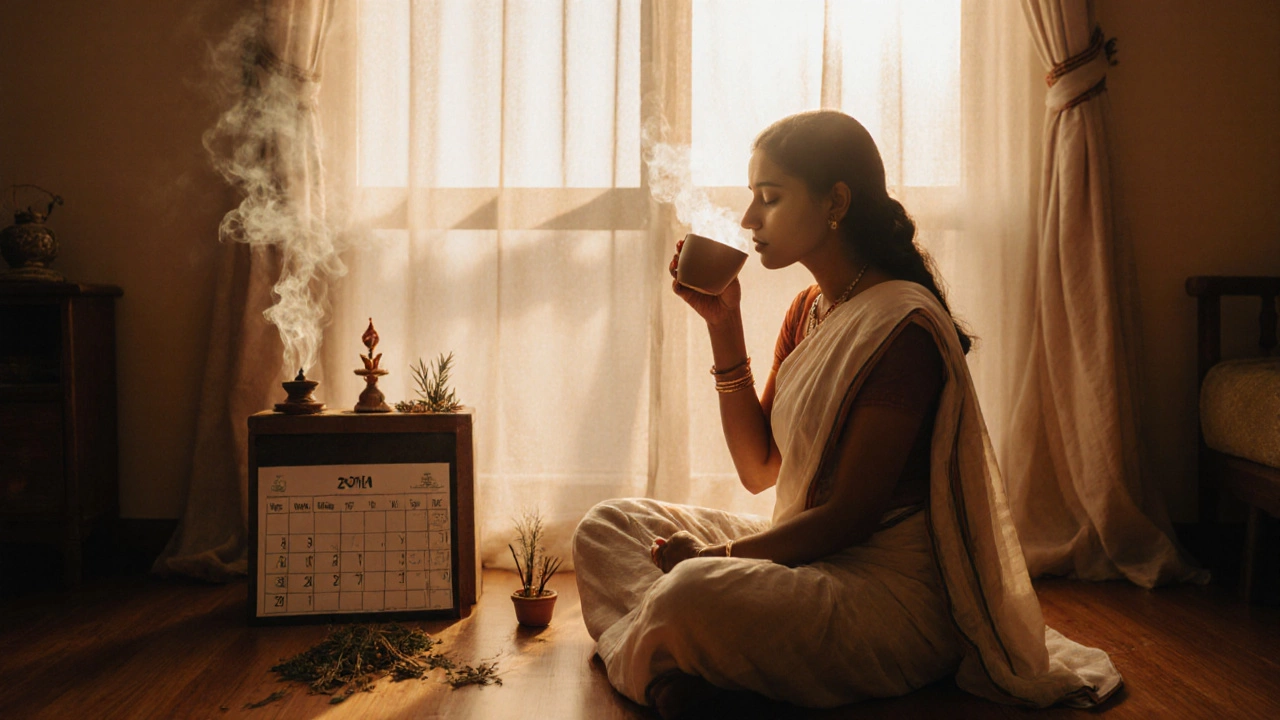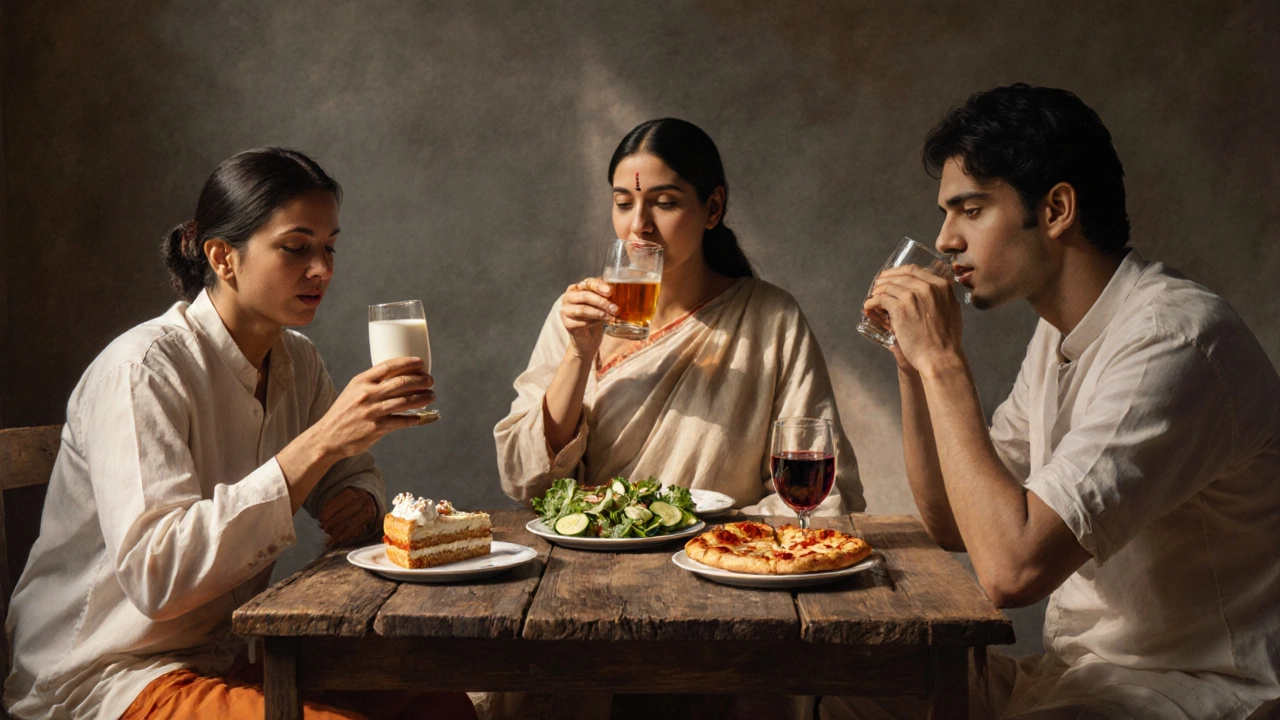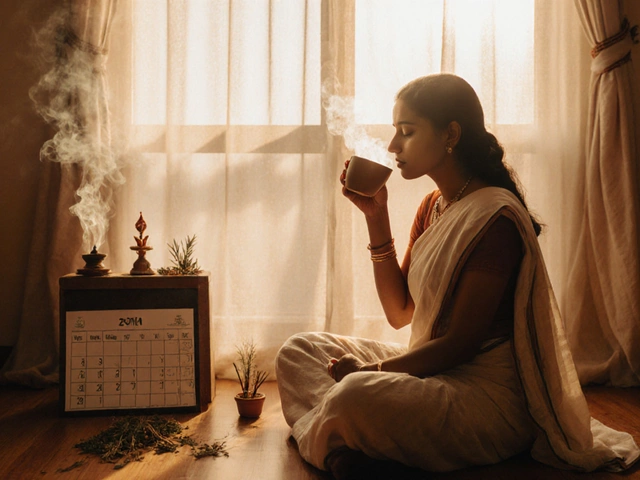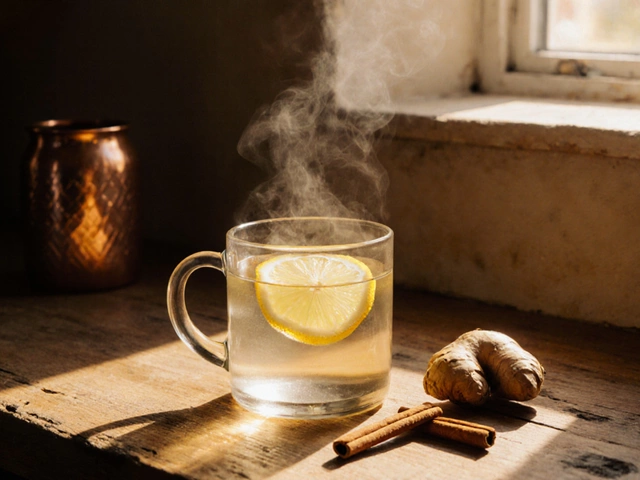
What Is the 80/20 Rule in Ayurveda? A Simple Guide to Balanced Living
Most people think Ayurveda is just about herbal teas and massage oils. But the real power of Ayurveda lies in a quiet, practical principle called the 80/20 rule. It’s not about strict diets or punishing routines. It’s about working with your body, not against it. If you’ve ever tried to follow a perfect health plan and ended up quitting by Wednesday, this rule is your lifeline.
What the 80/20 Rule Actually Means in Ayurveda
In Ayurveda, the 80/20 rule means you follow your ideal routine 80% of the time and allow yourself flexibility for the other 20%. This isn’t a loophole-it’s a survival strategy. Your body thrives on rhythm, not perfection. Think of it like breathing: you don’t inhale at 100% capacity every single time. You adjust. Ayurveda says the same for eating, sleeping, moving, and even thinking.
Take digestion, for example. If you’re a Vata type, your digestion is naturally quick but easily disrupted by stress or cold foods. The 80/20 rule tells you to eat warm, cooked meals most days (80%), but if you’re at a party and want a slice of pizza? Go ahead. One night won’t break your system. What breaks you is the guilt you carry after, or the next-day attempt to "fix" it with fasting or juice cleanses. That’s the trap. Ayurveda doesn’t punish. It guides.
How the 80/20 Rule Matches Your Dosha
Ayurveda classifies people into three main types: Vata, Pitta, and Kapha. Each has different needs. The 80/20 rule adapts to each one.
Vata types (tend to be thin, energetic, prone to anxiety) need routine more than others. Their 80% means eating at the same times, avoiding raw salads, and getting to bed before 10 p.m. Their 20%? A spontaneous walk in the park, a late-night movie, or a cup of coffee on Sunday morning. It keeps them grounded without feeling trapped.
Pitta types (strong metabolism, driven, intense) are the ones who want to optimize everything. Their 80% is cooling foods, avoiding spicy dishes, and scheduling downtime. Their 20%? That’s their freedom to compete, to push hard at work, or to enjoy a spicy curry once a week. Without that 20%, they burn out. Ayurveda knows Pitta needs a release valve.
Kapha types (grounded, slow, steady) need movement and lightness. Their 80% is daily exercise, avoiding heavy dairy, and waking up before sunrise. Their 20%? A weekend pancake breakfast, a long nap after lunch, or a bowl of ice cream after dinner. That small indulgence prevents rebellion. If Kapha is forced into rigid rules, they shut down. The 80/20 rule keeps them moving.
Real-Life Examples: The 80/20 Rule in Action
Here’s how this plays out in real life.
Meet Priya, 38, a teacher in Manchester. She’s a Pitta-Vata mix. Her 80% routine: warm lemon water every morning, lunch by 1 p.m., no caffeine after 3 p.m., and a 15-minute evening walk. Her 20%? She drinks wine on Friday nights. She eats pizza with her kids on weekends. She stays up late reading sometimes. She doesn’t feel guilty. Her digestion stays strong. Her energy stays steady. Her stress levels? Lower than most of her colleagues.
Or Raj, 52, a Kapha-type accountant. His 80%: yoga three times a week, no sugar before noon, and dinner before 7 p.m. His 20%? He has a slice of cake on his birthday. He naps on Sundays. He skips his morning walk if it’s raining. He doesn’t see these as failures. He sees them as part of the system. His blood sugar? Stable. His weight? Controlled. His mood? Calm.
This isn’t theory. It’s what thousands of people in India, the UK, and beyond have used for decades to avoid burnout and chronic illness.

Why Perfection Fails in Ayurveda
The modern wellness world sells perfection. Clean eating. No sugar. No alcohol. 6 a.m. workouts. But Ayurveda was never meant for that. It’s an ancient system built for real humans living in real worlds-with jobs, kids, travel, stress, and cravings.
When you aim for 100%, you create tension. Tension triggers cortisol. Cortisol disrupts digestion, sleep, and immunity. That’s the opposite of what Ayurveda wants. Ayurveda’s goal is balance, not control.
Think of your body like a garden. You water it daily, pull weeds, add compost. But you don’t expect every plant to grow at the same speed. You don’t yell at the roses because the tomatoes are slow. You adapt. Ayurveda works the same way.
How to Start Using the 80/20 Rule Today
You don’t need to overhaul your life. Start small.
- Choose one area where you feel the most stress: eating, sleeping, or moving.
- Define your 80%: What’s the simplest, most nourishing version of this habit? (e.g., eat dinner before 8 p.m., drink warm water in the morning, walk 10 minutes after lunch).
- Accept your 20%: What’s one thing you’ll allow yourself to enjoy without guilt? (e.g., chocolate on Sundays, late nights with friends, a glass of wine).
- Track it for two weeks-not with a journal, but with your body. Do you sleep better? Feel less bloated? Less anxious?
That’s it. No apps. No tracking calories. Just awareness.

The Bigger Picture: Ayurveda as a Lifestyle, Not a Diet
The 80/20 rule isn’t just about food. It’s about energy. It’s about how you spend your time, who you spend it with, and how you respond to stress.
If you’re constantly rushing, even your "healthy" meals won’t help. If you’re surrounded by negativity, even the best herbs won’t heal you. Ayurveda looks at the whole picture.
Your 80% might mean:
- Turning off your phone an hour before bed
- Saying no to one extra meeting a week
- Spending 10 minutes in silence every morning
- Calling a friend instead of scrolling
Your 20%? Watching a Netflix series in bed. Skipping yoga one day. Having ice cream for dessert. Living.
This is why Ayurveda lasts. It doesn’t ask you to become someone else. It asks you to return to yourself-with kindness.
What Happens When You Get It Right
When you live the 80/20 rule, you stop fighting your body. You stop feeling guilty. You stop chasing the next miracle cure.
You start noticing small wins:
- Your digestion feels lighter after meals
- You wake up without an alarm
- You don’t crave sugar as much
- You feel calmer during stressful days
These aren’t miracles. They’re signs your system is in rhythm. And rhythm is the foundation of long-term health in Ayurveda.
Forget extreme detoxes. Forget 30-day challenges. The 80/20 rule is the quiet, powerful secret that’s kept people healthy for thousands of years. It’s not flashy. But it works.
Is the 80/20 rule in Ayurveda the same as the Pareto Principle?
They share a name, but they’re not the same. The Pareto Principle (80/20 rule) in business says 80% of results come from 20% of efforts. In Ayurveda, the 80/20 rule is about balance, not efficiency. It’s not about maximizing output-it’s about minimizing stress. It’s about giving your body what it needs most of the time, while allowing space for life’s natural imperfections.
Can I use the 80/20 rule if I have a chronic condition like diabetes or high blood pressure?
Yes-but with guidance. The 80/20 rule still applies, but your 80% must align with your medical needs. For example, if you have diabetes, your 80% might mean avoiding refined sugars and eating balanced meals. Your 20% could be a small piece of dark chocolate once a week, monitored with your blood sugar. Always work with an Ayurvedic practitioner or doctor who understands both systems. Ayurveda supports, not replaces, medical care.
Do I need to know my dosha to use the 80/20 rule?
Not at first. You can start by noticing how your body responds to food, sleep, and stress. Do you feel energized after a light dinner? Do you crash after coffee? Do you feel bloated after dairy? These clues tell you what your body needs. Once you see patterns, you can explore your dosha to deepen your understanding. But you don’t need to label yourself to begin.
What if I mess up more than 20% of the time?
That’s okay. The 80/20 rule isn’t a scorecard. It’s a compass. If you’ve been eating junk food daily for months, don’t try to jump to 80% healthy overnight. Start at 30%. Then 40%. Progress, not perfection, is the goal. Ayurveda meets you where you are. The moment you stop judging yourself and start observing, you’re already on the path.
Does the 80/20 rule work for weight loss?
Yes-but not the way you might expect. In Ayurveda, weight loss isn’t about calories or cardio. It’s about digestion (agni) and metabolism. If your digestion is weak, your body stores fat as a defense. The 80/20 rule helps by stabilizing your routine: eating at regular times, avoiding late-night snacks, and choosing warm, cooked foods most days. This naturally improves digestion. Weight loss follows. It’s slow. But it lasts.
What Comes Next?
If this resonates, try this: tomorrow morning, drink a cup of warm water with a squeeze of lemon. No sugar. No rush. Just sit with it. Notice how it feels. That’s your first 80% step. The rest will follow.
Ayurveda doesn’t demand change. It invites it. And that makes all the difference.

Arnav Singh
I am a health expert with a focus on medicine-related topics in India. My work involves researching and writing articles that aim to inform and educate readers about health and wellness practices. I enjoy exploring the intersections of traditional and modern medicine and how they impact healthcare in the Indian context. Writing for various health magazines and platforms allows me to share my insights with a wider audience.
About
Medical Resource Center India is a comprehensive online platform dedicated to providing reliable health information and medical resources in India. Explore a wide range of articles, tips, and advice on medicine, healthcare services, and wellness. Stay informed about the latest developments in Indian medicine and access valuable insights into maintaining a healthy lifestyle. Discover expert guidance and health solutions tailored for every Indian citizen. Your go-to destination for authoritative medical knowledge in India.






